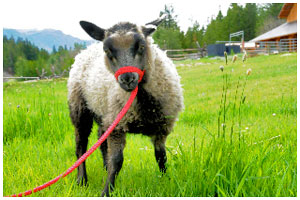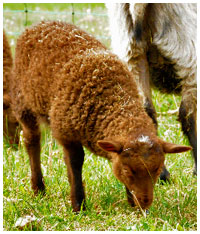Our Breeds: Shetland Sheep
A cattle rancher raising grass-finished beef soon becomes a grass farmer. The health and growth of the rancher’s cattle relies on the health and growth of the pastures.
Highland cattle are wonderful animals for keeping pasture in good condition – adding manure as fertilizer and eating most greenery in equal amounts. There are a few weeds and coarse plants however that the cattle avoid. In an effort to keep pastures in good balanced condition we looked for a sheep with similar qualities to the highland – hardy, thrifty, good mothers and able to thrive on a grass diet alone, a sheep that would eat those few plants the cattle didn’t like. Shetland sheep quickly became the best choice to complement the highland’s grazing patterns.
 |
Shetland sheep developed on the isolated Shetland Islands of Northern Scotland. Like the Highland cattle they are used to strong winds and difficult conditions. They are smaller and slower growing than most conventional sheep but with incredible natural health and vigour. They are part of the Northern short tailed sheep group, so do not need their tails docked, and they produce a soft fine wool in a rainbow of colours and markings, much in demand by spinners, knitters and other hobbiests. Rams tend to have wonderful curled horns, ewes occasionally have short horns but are more likely polled. Raised on grass and hay they produce a lean and delicately flavoured meat.
 |
Shetlands adapt well to a variety of conditions. We like their ease of lambing, their small size, their gentle but friendly natures and the clownish behaviours of the lambs. We will never have large numbers of sheep – we are too predator heavy for that – but keep a few choice sheep as a good balance for pasture maintenance. We intend to sell lambs every year to keep the flock size stable.
